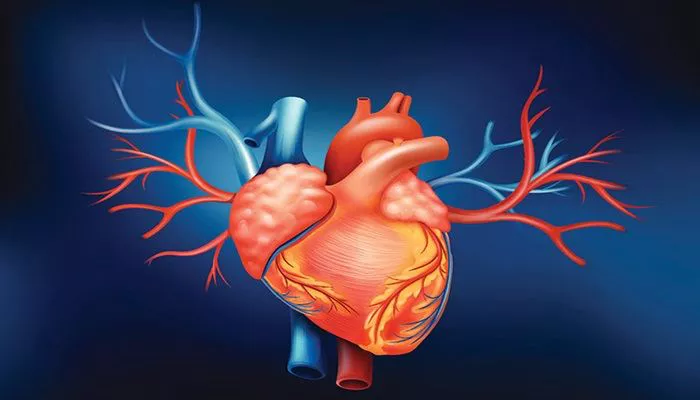Myocarditis is an inflammatory condition of the heart muscle (myocardium). It can be caused by infections, autoimmune diseases, toxins, or certain medications. One of the most troubling symptoms of myocarditis is dyspnea, or shortness of breath. Dyspnea can severely affect a person’s quality of life and may indicate underlying heart dysfunction. In this article, we will explore the seven main reasons why myocarditis can lead to dyspnea, explaining each reason in detail and using straightforward language.
1. Reduced Cardiac Output
How Reduced Cardiac Output Causes Dyspnea
When cardiac output decreases, the body may not receive enough oxygen-rich blood. Organs, including the lungs, may struggle to function properly. As a result, patients may experience shortness of breath, especially during physical activity.
The body tries to compensate for low oxygen levels by increasing the breathing rate, leading to the sensation of dyspnea.
Symptoms to Watch For
Patients may notice that they become easily fatigued or winded during everyday activities, such as climbing stairs or walking. They might also experience a feeling of breathlessness even at rest as the condition progresses.
2. Ventricular Dysfunction
Impact on Breathing
When the ventricles do not function correctly, the heart cannot pump blood efficiently. This inefficiency can lead to fluid buildup in the lungs, known as pulmonary edema. When fluid accumulates in the lungs, it makes it difficult for oxygen to move from the lungs into the bloodstream. This can cause significant shortness of breath.
see also: What Is The Gold Standard Test for Myocarditis?
Recognizing Ventricular Dysfunction
Patients with ventricular dysfunction may notice symptoms such as:
Difficulty breathing when lying flat (orthopnea)
Sudden shortness of breath at night (paroxysmal nocturnal dyspnea)
A persistent cough, often producing frothy or pink sputum
3. Arrhythmias
How Arrhythmias Contribute to Dyspnea
When the heart beats irregularly, it may not pump blood effectively.
This can lead to a decrease in cardiac output and insufficient blood flow to the lungs and other organs. As a result, patients may experience increased shortness of breath, especially during physical exertion.
Symptoms of Arrhythmias
Patients may feel palpitations, a racing heart, or a feeling of the heart “skipping a beat.” These sensations can be alarming and may accompany episodes of dyspnea.
4. Pericardial Effusion
Effects on Breathing
When the pericardial sac fills with fluid, it can restrict the heart’s ability to expand and fill with blood. This restriction can lead to decreased cardiac output and result in shortness of breath. Patients may experience dyspnea, especially when lying down, as the pressure on the heart increases.
Recognizing Pericardial Effusion
Symptoms of pericardial effusion may include:
Chest pain or discomfort
A feeling of fullness in the chest
Difficulty breathing, particularly when lying flat
5. Cardiogenic Shock
How Cardiogenic Shock Causes Dyspnea
In cardiogenic shock, the heart’s inability to pump blood effectively leads to a drastic decrease in blood pressure and inadequate blood flow to vital organs. This can result in severe shortness of breath as the body struggles to get enough oxygen. The lungs may fill with fluid, further complicating the situation.
Symptoms of Cardiogenic Shock
Patients may experience:
- Severe shortness of breath
- Rapid breathing
- Cold, clammy skin
- Confusion or altered mental status
Cardiogenic shock is a medical emergency that requires immediate treatment.
6. Diastolic Dysfunction
Impact on Breathing
When the heart cannot fill properly, it leads to increased pressure in the heart and lungs. This can cause fluid to leak into the lung tissue, resulting in pulmonary congestion. As fluid accumulates, patients may experience shortness of breath, particularly during exertion or when lying down.
Recognizing Diastolic Dysfunction
Patients may notice symptoms such as:
Shortness of breath during physical activity
Difficulty breathing while lying flat
Swelling in the legs and ankles
7. Systolic Dysfunction
Effects on Breathing
When the heart cannot contract effectively, it leads to reduced cardiac output and inadequate blood flow to the lungs. This can result in shortness of breath, even at rest. Patients may also experience fatigue and weakness due to the heart’s inability to meet the body’s demands.
Symptoms of Systolic Dysfunction
Patients with systolic dysfunction may experience:
Persistent shortness of breath
Fatigue with minimal exertion
Swelling in the legs and abdomen
Conclusion
In summary, myocarditis can lead to dyspnea through several mechanisms, including reduced cardiac output, ventricular dysfunction, arrhythmias, pericardial effusion, cardiogenic shock, diastolic dysfunction, and systolic dysfunction. Each of these factors can impair the heart’s ability to pump blood effectively, leading to insufficient oxygen delivery to the body and resulting in shortness of breath.


